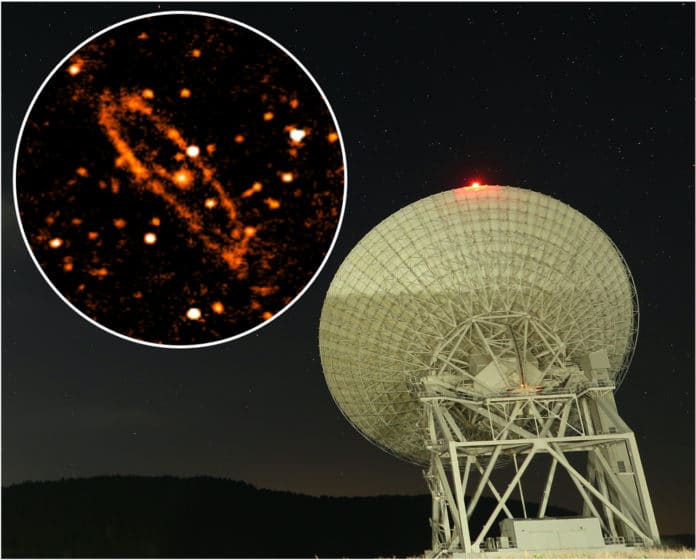Our Milky way’s neighbor, the Andromeda galaxy, is the most distant object in the sky. It is a type of spiral galaxy in the constellation Andromeda. The distance of the Andromeda galaxy from the earth is only 2.5 million light-years away.
Now, scientists capture the most detailed radio image of the Andromeda galaxy to date. This radio image is expected to help scientists identify and study the regions of Andromeda where new stars are born.
The image was captured at a microwave frequency of 6.6 GHz. Scientists turned to the Sardinia Radio Telescope to capture the image at such frequency, a 64-meter fully steerable telescope capable of operating at high radio frequencies.
University of British Columbia physicist Sofia Fatigoni said, “This image will allow us to study the structure of Andromeda and its content in more detail than has ever been possible. Understanding the nature of physical processes that take place inside Andromeda allows us to understand what happens in our galaxy more clearly—as if we were looking at ourselves from the outside.”
The galaxy’s emission is very faint within the microwave band frequencies between one GHz to 22 GHz. This makes it quite challenging to see its structure. Although, it is only in this frequency range that particular features are visible. Map within these frequencies can reveal more about physical processes taking place within Andromeda.
Based on telescopic observations and consistent data analysis, scientists estimated the rate of star formation within Andromeda. They also created a detailed map that highlighted the galaxy disk as the region where new stars are born.
Dr. Elia Battistelli, a professor in the department of physics at Sapienza and coordinator of the study, said, “By combining this new image with those previously acquired, we have made significant steps forward in clarifying the nature of Andromeda’s microwave emissions and allowing us to distinguish physical processes that occur in different regions of the galaxy.”
“In particular, we were able to determine the fraction of emissions due to thermal processes related to the early stations of new star formation, and the fraction of radio signals attributable to nonthermal mechanisms due to cosmic rays that spiral in the magnetic field present in the interstellar medium.”
From the resulting map, scientists were able to identify a catalog of about 100 point sources, including stars, galaxies, and other objects in the background of Andromeda.
Journal Reference:
- S. Fatigoni et al., Study of the thermal and nonthermal emission components in M 31: the Sardinia Radio Telescope view at 6.6 GHz, Astronomy & Astrophysics (2021). DOI: 10.1051/0004-6361/202040011
